March 8 - 19, 2021
- IGDVS Newsletter
- Mar 8, 2021
- 10 min read
Updated: Oct 19, 2021
Dear Families,
We are ready to welcome the children on Monday morning! Please remember to complete the screener before leaving your home. Here's the link: https://forms.gle/pNopfMs7w3Fo6uiT9. This is a very important step. Your child will not be able to enter the classroom if it is not complete. The administration team will be checking emails this weekend so if you have any questions about Monday, feel free to email us. Make sure your child eats a hearty breakfast. A gentle reminder for your child that there is no hugging when they see their friends. Think of creative ways with your child this weekend to greet friends. Please also send us your child's COVID test results if you haven't done so. Have a restful weekend!
Warm Regards, IGDVS Team

COVID-19 Education
It’s likely that you’ve been hearing a lot about tiers and reopening schools. In August 2020, California Governor Gavin Newsom announced that California is moving into a four-tier system during the pandemic that will determine when businesses and schools can start reopening. The four tiers are purple, red, orange, and yellow.
Widespread (purple): Counties with more than 7 daily new cases per 100,000 residents, or higher than 8% positivity rate. For counties in the purple tier, most non-essential indoor businesses are closed, and schools will not be allowed to reopen. This also goes for our school.
Substantial (red): Counties with 4 to 7 daily new cases per 100,000 residents, or 5-8% positivity. For counties in the red tier, some non-essential indoor businesses are closed.
Moderate (orange): Counties with 1 to 3.9 daily new cases per 100,000, or 2-4.9% positivity. Counties in the orange tier will have some indoor business operations open with modifications.
Minimal (yellow): Counties with less than 1 daily new case per 100,000 or less than 2% positivity. Counties in the yellow tier have most indoor business operations open with modifications.
Mendocino County has been in the red tier since last Tuesday, but we need to be in the red tier for two weeks before school can open. If you want to track the tiers of different counties, visit this site: California COVID-19 Reopening Tracker (ceros.com) For more information, visit COVID19.CA.GOV to get a map of all counties and where they stand. Resources: COVID-19 tiers California: Newsom's 4-tier system for reopening CA explained - ABC7 Los Angeles Gavin Newsom press conference today: Governor announces new reopening framework, replaces CA county watch list - ABC7 Los Angeles

Virtue of the Month: Fairness
March is the month of fairness. Fairness means treating everyone the same without any discrimination or favoritism so that everyone has equal chances for success. To start off our month, here is an ethical dilemma for fun. Read through it, and decide what you would do if you were Jenny. Would you tell the music director that you still want to audition, or would you take your good fortune for granted and risk the anger of your friends? Fairness Dilemma: Sophie, Jenny, and Liam all cannot wait to audition for the school musical. They all hope to be cast in the lead. Jenny had the lead in the musical last year and was a big hit. The music director decides that Jenny can have the lead this year without an audition because Jenny will be perfect for the part. What does Jenny do? Sophie and Liam are waiting by Jenny's locker on the day of the audition. "Let's go to the audition together!" they say to Jenny. They are both excited at the opportunity to get the lead. What does Jenny say to Sophie and Liam? How would you feel and react if you were Sophie or Liam, and Jenny told you they were pre-cast in the lead, without an audition?

Ms. Applebee is an English teacher for the junior high and freshman classes. She also teaches AP Art History, AP US History, and is a coach for Mock Trial and Debate at Developing Virtue Girls School. Question: What inspired you to make the decision to come to CTTB and become a teacher at the girl's school? Ms. Applebee: I ate at the restaurant and had toured the campus and the Buddha Hall a couple of times in the past. In college, my major had been religious studies. I like monasteries and monastics - I think they make the world a better place. I experienced a feeling of affinity for the campus even before I worked here. I also knew Julia Mark from a past Teaching American History program that we were on together. I remembered her enthusing about her students and the school, so when I saw they were looking for a teacher, I applied. My interview with Jin Jr Shr was so unlike any other interview process I had ever had. I felt right at home, so energized yet comfortable with her as we sat in front of the Girls School talking about our love of learning and philosophies of teaching. I was very happy to get the job and spent the next few weeks wondering about what my students would be like. Question: What is your most memorable experience when teaching? Ms. Applebee: At DVGS it definitely came at the end of my first class when the students stood up, put their hands together, and bowed me farewell in English and Mandarin. That was something I had never experienced in public and charter schools where I taught before. ("We're not in Kansas now, Toto." I thought to myself.) Question: How many years have you been teaching for? Ms. Applebee: My first year was 1999, so... kind of a long time now. Question: What is your favorite subject to teach? Ms. Applebee: Well, it is hard, my favorite subject is history... but I think I enjoy teaching English more - there is more scope, variety, and I myself am discovering lots of things about literature that I never paid heed to when I was in school. In our discussions, students continually share their ideas and their unique analysis of literature and poetry, which creates a vibrant learning community in which I am also learning and being inspired by their insights. Question: What inspires you the most? Ms. Applebee: Writers and their ideas. Particular writers - often writers who travel. Many are people who lived before me, most notably; Tove Jansson, Edward Lear, Ibn Battuta, and Dr. Samuel Johnson. Living people too; Tete Michel Kpomassie, Janosch, and the Icelandic writer Sjon. Their travels and unique views of nature and the human condition fill me with feelings of connection, wonder, and creativity. Question: Could you share a Buddhist passage or principle that you encountered and how it influenced you as a teacher? Ms. Applebee: Well, when I first came to the school I had never really considered the virtue of filial piety, so how about a virtue instead? "Oh, you Americans!" Jin Jr Shr laughed when I told her I had changed the names my parents gave me because I did not like the way they sounded with my family name. ('Denise Marie' was too French to my ear, with my solidly English, 'Applebee'.) DVGS students have really taught me a lot about the importance of filial piety. This new-to-me spotlight on filial piety has given me - even at the ripe old age of 50-something - new-found ways to express gratitude and cherish my relationship with my parents, siblings, and older relatives, and improved my relationship with my son. (I will not, however, be changing my name back.) Question: What is an interesting fact about you that students would be surprised to learn? Ms. Applebee: As a college student, I won the chance to attend the 40th Anniversary of the signing of the United Nations Charter in San Francisco as a student observer. It took place over four days in June and I sat with different dignitaries and representatives from 97 countries each day. One person I remember well was an ashy-faced baron from East Germany - there was still an East Germany! Also, wouldn't you think that a socialist country would get rid of hereditary titles like 'baron'? There he was though, in all his pallid glory, going out to smoke countless cigarettes between each speaker, a ghost behind his own fumes. He was utterly exotic to me: the first person I had ever met from behind the Iron Curtain. (I forgot his name and tried to find out what it was with an intensive Google search, but it is as if he never existed. So maybe he was a ghost? Or with the Stasi?). Harold Stassen, an original U.S. signatory to the 1945 U.N. Charter, was there too, with a pamphlet he was circulating calling for a change to voting protocols. The Cold War, famine in Ethiopia, and global childhood vaccinations were the big issues of the time. Question: Do you have any advice for students or words of wisdom on how to succeed in your class? Ms. Applebee: Attempt to find all of your classes - the texts, resources, lessons, teachers, and your peers - interesting. I think we are able to control a lot of what we experience with our attitudes and intentions, no matter the subject, teacher, or setting. If you can cultivate your curiosity and enthusiasm for learning, every class will be, dare I say it, enjoyable - regardless of the workload. Question: What is the best thing about being a teacher? Ms. Applebee: The students, of course. Without them, I would just be talking to the walls. They challenge me and give me an honorable purpose. Sharing my love of literature and history with students at DVGS is pure delight. Without a doubt, DVGS students are the most motivated, polite, and interested students I have ever taught. Question: What is your favorite way to relax? Ms. Applebee: Easy. Listening to audiobooks while walking my dogs in the hills.

Environmental Article
California: The State on Fire
Written by Katherine Wang
Flames lick up the walls. Smoke rushes out of the burning house, choking you. Stumbling outside, you look back at your once-beautiful house, now a monster of ash and fire. All of your belongings, gone. Years of memories up in flames. Loved ones lost in the fires. This is the horrifying reality that thousands of people in California face every year, and tens of thousands more are affected by the smoke, air pollution, and drought brought on by the fires.
2020 was recorded as the largest wildfire year in Californian history, with more than nine thousand fires and over 4.3 million acres of land destroyed. Previous years have shown similar statistics. California is infamous for its numerous fires and ongoing drought, but what exactly makes it so susceptible to fires?

Most major wildfires that occur in California happen in the fall, right after a long, dry summer. Droughts also contribute to the sheer number of fires, simply because the lack of water damages the forests and trees that cover more than one-third of the state, creating perfect kindling for fires. “What we’ve been seeing in California are some of the clearest events where we can say this is climate change- that climate change has clearly made this worse,” says Dr. Zeke Hausfather, a climate scientist at the Breakthrough Institute. “People who have lived in California for 30, 40 years are saying this is unprecedented, it has never been this hot, it has never been this smoky in all the years I’ve lived here.”
Furthermore, according to CalFire, humans cause around 84% of all California’s wildfires. Simple human negligence such as poorly maintained power lines, car accidents, or improperly discarded cigarettes and matches could potentially create huge fires. “California has a lot of people and a really long dry season,” said Dr. Park Williams, a bioclimatologist at Columbia University’s Lamont-Doherty Earth Observatory. “People are always creating possible sparks, and as the dry season wears on and stuff is drying out more and more, the chance that a spark comes off a person at the wrong time just goes up. And that’s putting aside arson.” Additionally, many humans are now choosing to move to rural areas with lots of trees and vegetation that are inclined to burn. The 2018 FireLine State Risk Report shows that 13,680,100 homes in California are in wildfire risk zones, and 15% of those homes are at high or extreme fire risk.

So what can you do to help this crisis?
If you live in fire-prone states, spread awareness about the dangers of wildfires and prevention methods and properly dispose of cigarettes and matches. Make sure your home is not in a high-risk area and have a safety plan ready in case something happens. “Until it happens in your own backyard, you feel it’s very tangential,” said Dr. Kimiko Barrett, a wildfire researcher and analyst at Headwaters Economics.
“You don’t think of wildfire risk as something that will happen to you, until it does.”

Vegan Recipes
Pumpkin Bars
Ingredients for Pumpkin Bread:
¼ cup ground flaxseed
¼ cup plus 2 tablespoons warm water
¾ cup all-purpose flour
¾ cup almond flour
1 tablespoon pumpkin pie spice
2 teaspoons baking powder
½ teaspoon baking soda
½ teaspoon sea salt
1 cup canned pumpkin puree
2 tablespoons melted coconut oil
⅓ cup maple syrup
1 teaspoon vanilla extract
vegan chocolate chips, optional for sprinkling
Ingredients for Vegan Frosting:
4 ounces vegan cream cheese*
1½ tablespoons vegan butter, slightly softened
2 cups powdered sugar, more for a stiffer frosting, sifted if lumpy
⅛ teaspoon pure vanilla extract
Instructions for Pumpkin Bread:
Preheat the oven to 350°F and lightly grease an 8x8-inch baking dish.
In a small bowl, combine the flaxseed and the water and set aside for 5 minutes to thicken.
In a large bowl, combine the all-purpose flour, almond flour, pumpkin pie spice, baking powder, baking soda, and salt.
In a medium bowl, whisk together the pumpkin, coconut oil, maple syrup, vanilla, and the flaxseed mixture.
Pour the wet ingredients into the bowl of dry ingredients and stir until just combined. Spread into the baking dish (the batter will be thick) and bake for 25 to 30 minutes or until a toothpick comes out clean. Let the cake cool completely before frosting or slicing.
While the cake cools, make the frosting: In a large bowl, beat the cream cheese and butter with an electric mixer until smooth. Add the vanilla and powdered sugar, and mix until smooth.
Recipes from Love and Lemons https://www.loveandlemons.com/pumpkin-bars-recipe/ https://www.loveandlemons.com/vegan-cream-cheese-frosting/
Crafts To Do at Home: Scrunchies!
If you’re feeling a bit nostalgic about the 1990s, then scrunchies are here to make a comeback! Just follow these simple steps to make yourself a fashionable and functional accessory:
Step 1: You will need to cut out a 2-by-22-inch strip of fabric.
Step 2: Then fold fabric into half, lengthwise and make sure that the right sides are facing each
other.
Step 3: Sew a straight line across the raw edge.
Step 4: Pull the strip right side out by attaching a safety pin at one end and weave the pin through
the inside of the tube and pull it out on the opposite end.
Step 5: Cut an elastic band into nine inches and attach a pin to one end.
Step 6: Thread the elastic or hair tie through the tube with a safety pin.
Step 7: Then, tie the elastic into a knot.
Step 8: Fold the edges to create an even seam, with one overlapping the other, then sew straight
across to join the two sidesConclusion
With that, you've got yourself a beautiful scrunchie for everyday use! Images from www.marthastewart.com

Chinese New Year Crossword
Since Chinese New Year just passed, here is a fun crossword about Chinese New Year created by Kaitlin Harness!
Just click the link below to fill in the crossword. Have fun!
Newsletter Crossword - Chinese New Year - Crossword Labs

Inspirational Quote
"We must tell girls their voices are important." - Malala Yousafzai

Fun Fact of the Month
The inventor of the microwave appliance only received $2 bonus for his discovery.


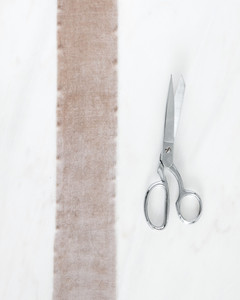

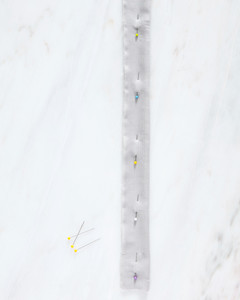

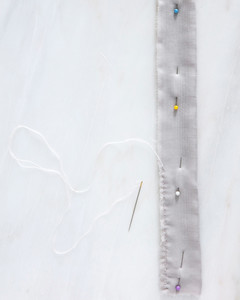

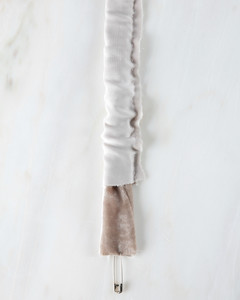

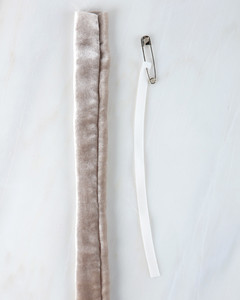

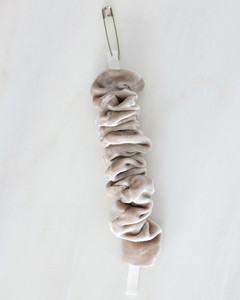

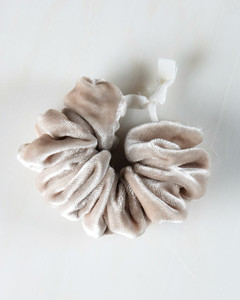

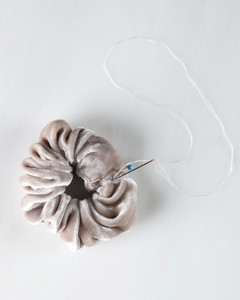
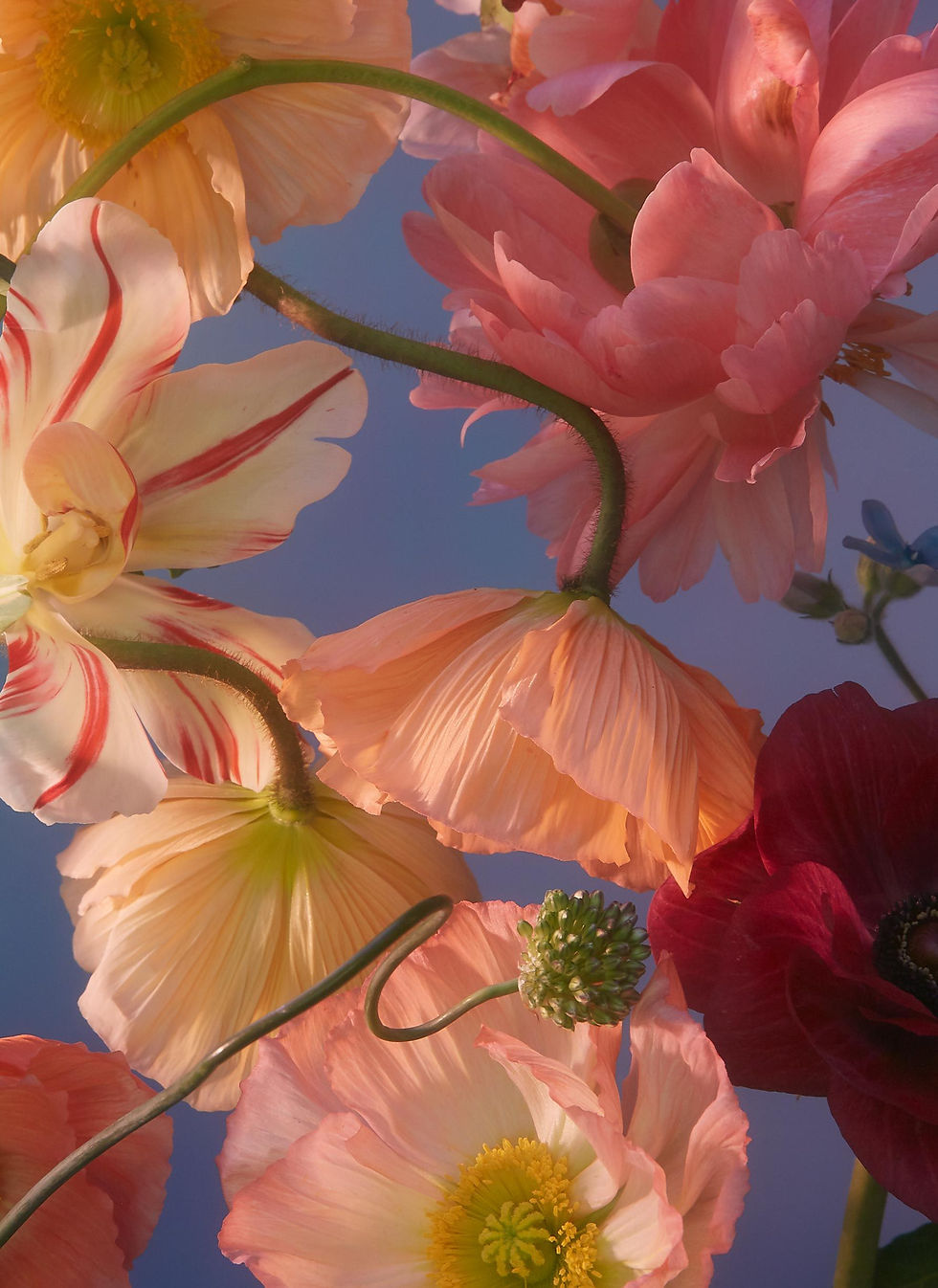


Comments